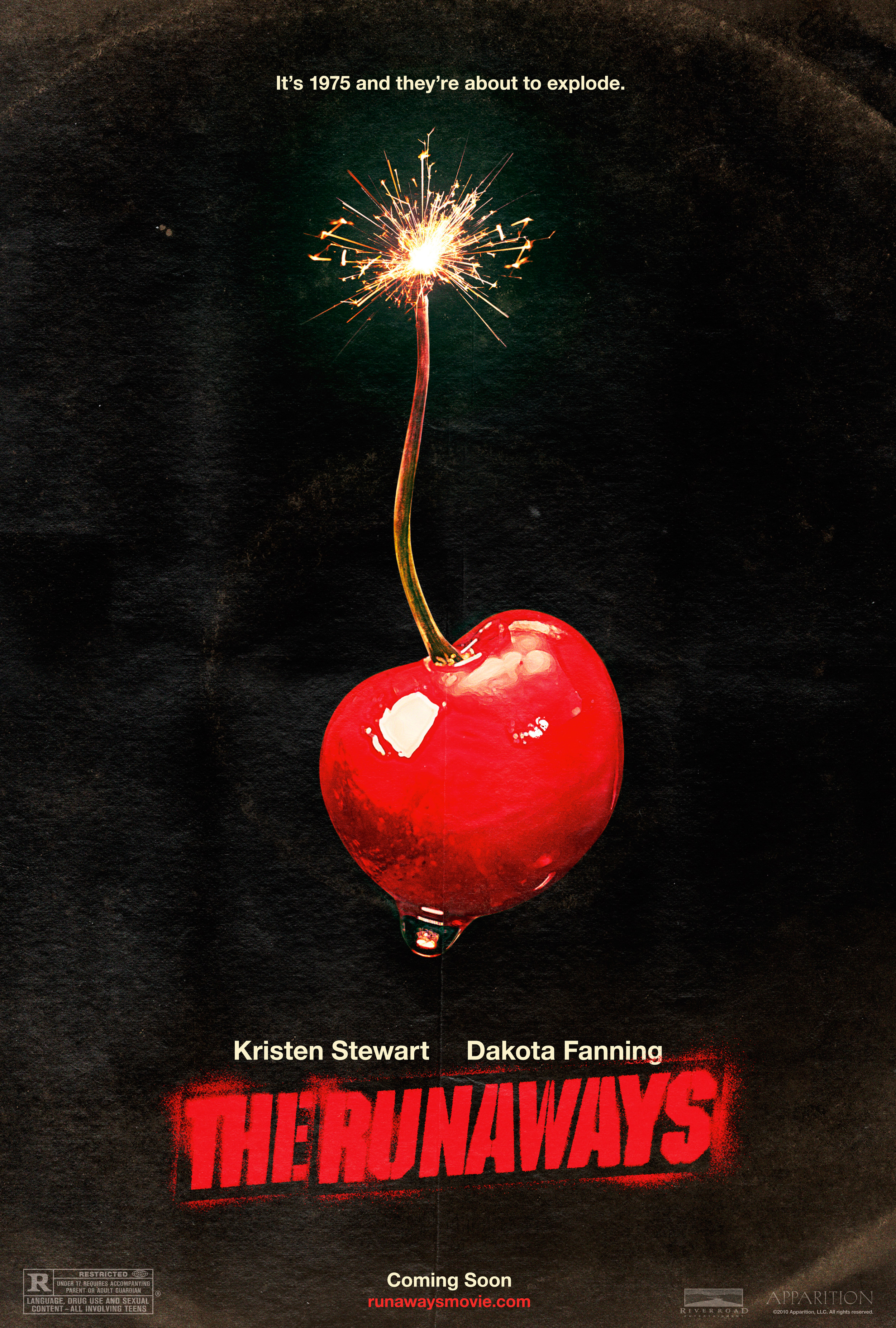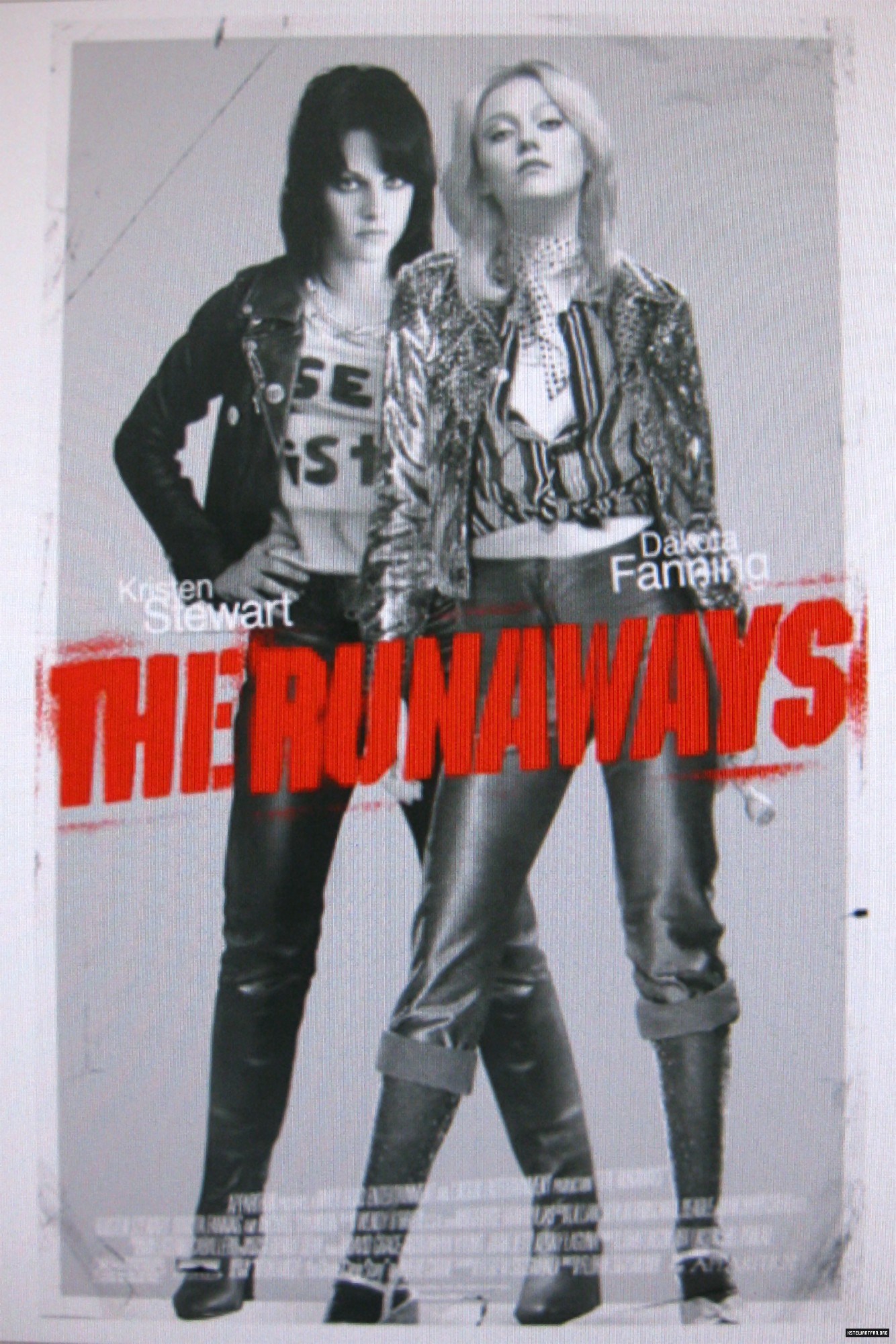
THE RUNAWAYS (2010, directed by Floria Sigsmondi, 109 minutes, U.S.)
BY DAN BUSKIRK FILM CRITIC
Thirty-five years after their formation, The Runaways moment has finally arrived. Widely mocked, derided as puppets and mostly ignored during their musical run between 1975 and 1979, the band’s story is now mythologized for the big screen, starring two of the most popular actresses in Hollywood. There seems to be an authentic buzz at the possibilities of a Runaways bio and I’ll admit a critical desire to see them knock this hard rockin’ story out of the park. It gives me no pleasure to instead report that we have got another musical biopic that takes a dynamic story and turns it into movie Muzak.
It is particularly frustrating because the film does get so much right. People were skeptical that the actress from the “True Love Waits” teen vampire flick Twilight (Kristen Stewart) and child star of the nineties, Ms. Dakota Fanning could embody bad girls Joan Jett and Cherie Curry respectively, but damn if their portrayals are not dead-on, getting their posture and their bored-shitless expressions across with believable attitude. And bug-eyed Michael Shannnon plays the scene-stealing Svengali Kim Fowley with such obnoxious hustler flair you can almost smell his bad breath. Their full-blooded portrayals and the film’s ragged 1970’s look are The Runaways chief charms and they may be enough for the more visually oriented movie-goer to chew on.
Ultimately this style over substance stance just bolsters a complaint that critics have hauled out since the 1980’s, that Floria Sigsmondi is one of those rock  video directors who know little about how to tell a story in a feature-length film. She has all the surfaces right yet the script, on which Sigsmondi receives sole writing credit, never succeeds in defining the scope or scale of the Runaways success. The band crafted five proper albums, played on bills with Van Halen and Cheap Trick, worked their way into the punk scene (befriending The Ramones and The Sex Pistols) and rocked like few other women of their era; yet in this hazy collection of loosely strung together anecdotes The Runaways seems like something crazy that happened over summer vacation.
video directors who know little about how to tell a story in a feature-length film. She has all the surfaces right yet the script, on which Sigsmondi receives sole writing credit, never succeeds in defining the scope or scale of the Runaways success. The band crafted five proper albums, played on bills with Van Halen and Cheap Trick, worked their way into the punk scene (befriending The Ramones and The Sex Pistols) and rocked like few other women of their era; yet in this hazy collection of loosely strung together anecdotes The Runaways seems like something crazy that happened over summer vacation.
Worse yet, Sigsmondi somehow misses out on a chance to honor the young women as serious musicians or to show the type of Girl Power camaraderie they possessed. When we meet the young Joan Jett she is plunking around awkwardly on the guitar, and when she later hooks up with drummer Sandy West their enthusiastic banging makes it seem like the sleazy Fowley’s hustling is the necessary element to put their act over. Later they command the stage like stars (in a complete recreation of this YouTube clip) but we miss the moment where it really comes together and the teens realize they’re on to something big. Cherie’s Behind the Music-style descent instead dominates the story to such an extent that the characters of Lita Ford and the rest of The Runaways are for all intents and purposes cameos in their own story.
In the place of empowered young women we get Cherie acting out by being “too sexy” while Joan (who is Executive Producer) shakes her head in scolding disapproval. The moralistic tone builds as Cherie drowns her woes in drugs and booze and Joan gets to graduate into pop stardom. It’s almost as if Sigsmondi was sent in to remove the guts that made this band so interesting; she even changes Cherie’s identical twin sister Marie into a plain old ordinary sister (Dakota Fanning, cheated out of a chance to play a duel role, must have drooled at the possibilities left dashed). Sigsmondi does work in some of the girl-on-girl jailbait titillation that was always part of their appeal and Fowley gets to spout leering lines like “I am the luckiest dogfucker in space!” yet ultimately The Runaways is a lesson in surfaces that robs a new generation of fans of the band’s still provocative rock and roll heart.
